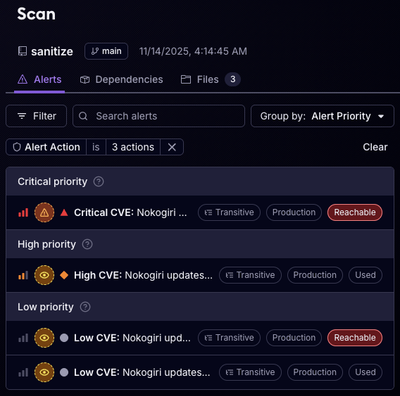
Product
Reachability for Ruby Now in Beta
Reachability analysis for Ruby is now in beta, helping teams identify which vulnerabilities are truly exploitable in their applications.
build-docker-image-from-tarball
Advanced tools
Take a path to a tarball image and build that tarball into a docker image
Module that takes a path to a git archive tarball and uses heroku-style buildpackg to build the repo into a docker image.
You will need the following installed. To get started you can use the supplied vagrant file which automatically installs docker and node.js on startup
The docker daemon must be installed and running. Visit https://docker.io for instructions on installing docker
A valid buildstep base docker image must be available in the list of docker images. There is an image available in the public docker index that will work if you do not wish to build your own
docker pull nisaacson/buildstep
# optionally tag this image with your own name
# docker tag nisaacson/buildstep foo_buildstep
npm install -S build-docker-image-from-tarball
Specfiy the following
sourcePath: /path/to/git/archive.tar.gzbuildImageName: buildstep base image that containers the builder script and heroku buildpacksrepo foo the name of the image that will be built and appear in docker images once the build completesvar buildFromTarball = require('build-from-tarball')
var data = {
sourcePath: '/path/to/git/archive.tar.gz',
buildImage: 'foo_buildstep',
destImageName: 'foo_app'
}
buildFromTarball(data, function(err) {
if (err) {
console.dir('failed to build docker image from git archive tarball', err)
return
}
console.log('image built correctly. You should now see the image %s when you execute `docker images`', data.destImageName)
})
Since the build progress is quite long, you may wish to monitor the progress of the build as it progresses. To monitor the progress, the builder is an instance of EventEmitter that emits log events instead of spamming stdout.
var Builder = require('build-from-tarball')
var data = {
sourcePath: '/path/to/git/archive.tar.gz',
buildImage: 'foo_buildstep',
repo: 'foo_app'
}
var builder = new Builder()
// emit log events to avoid spamming stdout
builder.on('log', function(log) {
console.dir(log)
})
builder.build(data, completeHandler)
# create the default VM
vagrant up
# log into the VM via ssh
vagrant ssh
# navigate to the repo root directory
cd /vagrant
# install development dependencies
npm install
# run the tests
npm test
FAQs
Take a path to a tarball image and build that tarball into a docker image
We found that build-docker-image-from-tarball demonstrated a not healthy version release cadence and project activity because the last version was released a year ago. It has 1 open source maintainer collaborating on the project.
Did you know?

Socket for GitHub automatically highlights issues in each pull request and monitors the health of all your open source dependencies. Discover the contents of your packages and block harmful activity before you install or update your dependencies.

Product
Reachability analysis for Ruby is now in beta, helping teams identify which vulnerabilities are truly exploitable in their applications.

Research
/Security News
Malicious npm packages use Adspect cloaking and fake CAPTCHAs to fingerprint visitors and redirect victims to crypto-themed scam sites.

Security News
Recent coverage mislabels the latest TEA protocol spam as a worm. Here’s what’s actually happening.